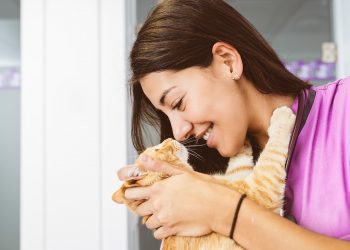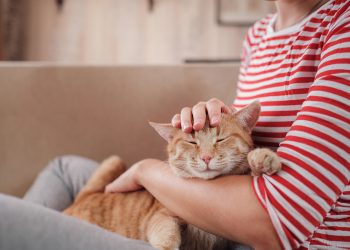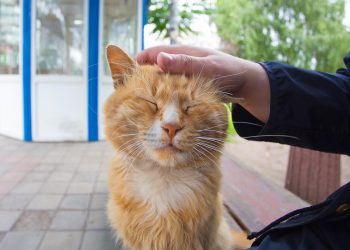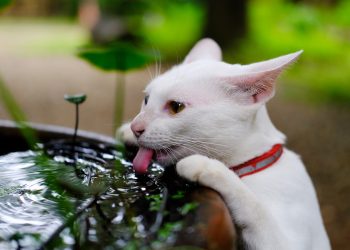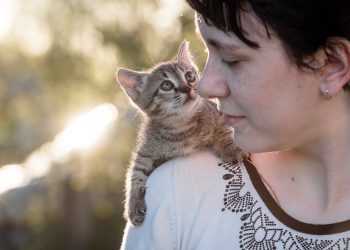Can my kitten eat normal cat food?
Are there substitutes for kitten wet food? When to switch from kitten to cat food? Shifting to adult cat food can be confusing at times, especially if you read reviews of kitten food.
Kitten food is higher in nutrients because it’s designed to boost physical development and sustain a kitten’s journey from a little pip to an adult-sized cat. This growth journey is often difficult, so you must provide your kittens with the right type of food from day one.

Is Kitten Food Different from Cat Food?
Yes, kitten food is formulated differently from adult cat food. As we’ve mentioned earlier, kitten food is made for kittens that have demanding health needs. They need a very balanced ratio of nutrients, and their sensitive organs can’t take malnutrition for a long time.
If you have taken care of kittens before, you already know that they can suddenly pass or die for no reason. Since kittens have a higher mortality rate and they can succumb to malnutrition easily, it’s important that you only give your kitten the right type of food all the time.
Kitten food is boosted in terms of protein, fats, calories, and other important nutrients. The formulation of kitten food enhances normal physical development so that kittens can grow into strong adults with great bone structure and lean muscles. Kitten food is also notable for being very easy to digest and hypoallergenic. Small cats need to be fed a diet that won’t trigger constipation or diarrhea (for obvious reasons).
On the other hand, cat food is formulated as a maintenance food or an everyday staple for maintaining the needs of an adult cat’s body. Adult cat food is also widely available, you will have zero problems tracking down a new package every time you need one, and it comes in so many flavors that you can pick a new one when your adult cat refuses to eat the flavor you bought it first.

To completely understand the importance of the right food to your kittens, you have to consider what happens right after a kitten is born. The first two months of life are the most critical, and the mother’s care and milk are two of your best defenses against possible death. After two months, when the kitten is being weaned from mother’s milk, the dietary substitute has to match the mother’s milk quality. Kittens undergo rapid growth in the first six months of life. This is also the essential socialization phase where kittens learn manners from their mothers, and they also learn how to play with other cats. Kittens need lots of fats and proteins during this time of their lives. The fat and protein density are important because growing kittens use up plenty of energy/calories and nutrients every day.
Per pound of body weight, kittens consume twice as many calories and nutrients compared to adult cats. This is the main reason why kittens need to be fed only kitten food because kitten food has the right ratio of calories and nutrients in the first place. We want to give food to kittens that can provide a very packed form of energy and nutrients that won’t overfill their bellies but will still provide the necessary nutrition.
The small teeth of kittens and the size of their bellies greatly limit what kittens can successfully bite, chew, and digest. If the food does not provide the right nutrition level, your kitten will be skinny and susceptible to disease.

How Long Should Cats Eat Kitten Food?
Can a five-month-old kitten eat cat food? No, a 5-month-old kitten is too young for adult cat food. The actual timing for giving adult cat food to a kitten depends on how many months they attain adulthood. The average is at least 12 months of age and beyond.
This is the safe range for giving adult cat food. However, some breeds like the Maine Coon do not reach full maturity until 18 months of life, so that’s going to be more than a year or almost two years of investing kitten food, just so your Maine Coon or any other large breed of cat doesn’t get stunted. Not many cat owners know this, so it is common for many cats to become stunted because they are fed adult cat food too quickly.
How much wet food to feed a kitten?
During the transition period from dry kitten food to wet kitten food, it is recommended that you cut down the meal to 70% dry food and added 30% wet food (by weight) for a few days, followed by 50% dry food and 50% wet food after three days or so.
A pouch of wet cat food is usually 100 grams. Adjust the meal every time by cutting down the grams by 10 grams or more each time. That way, you will get a more accurate weight when feeding your kitten, and you will neither underfeed nor overfeed your cat.

What Kind of Cat Food Is Good for Kittens?
The right type of cat food for your kitten would be protein and fat-packed kitten food. There are two kinds of kitten food on the market – dry kitten food and wet kitten food. Kittens are often started with dry kitten food before they are shifted over to wet cat food. As we have previously discussed, the wet kitten food can be integrated later on to give the kitten’s diet some variety.
It’s not exactly a good thing to maintain a purely dry diet for cats, whatever their age. The big downside of dry kibble is it encourages dehydration. The downside of wet food is that with the additional water content, kittens can get fuller, faster, and some nutrient deficiency might result.

Next on your reading list:

